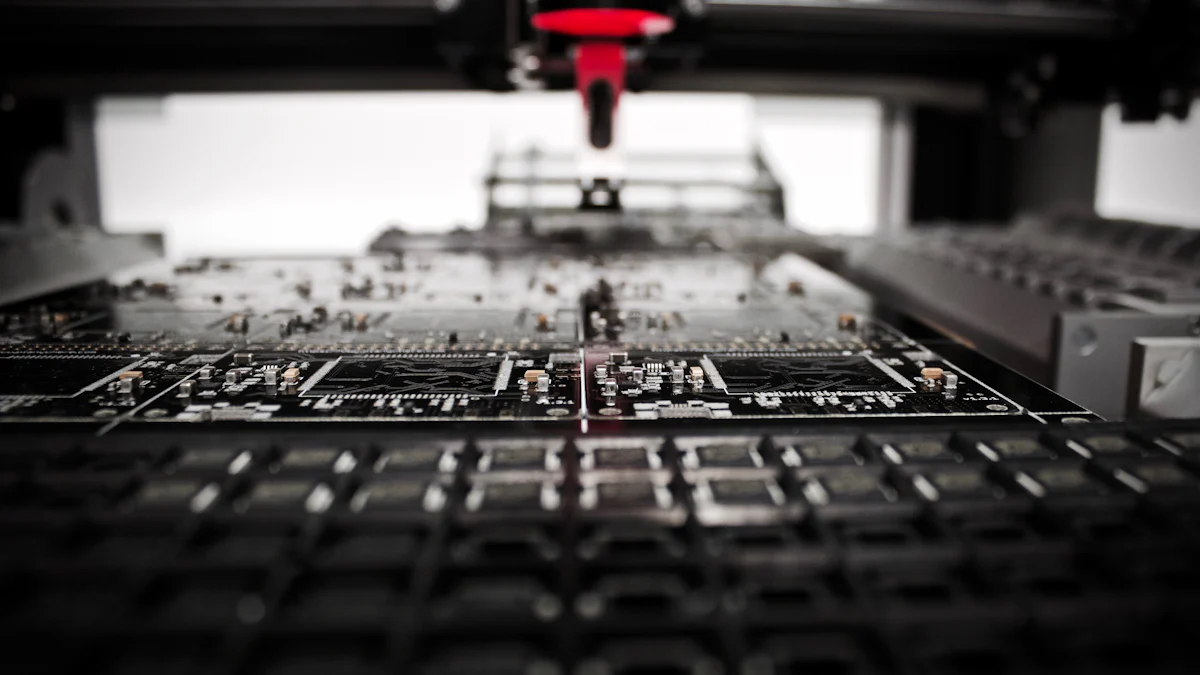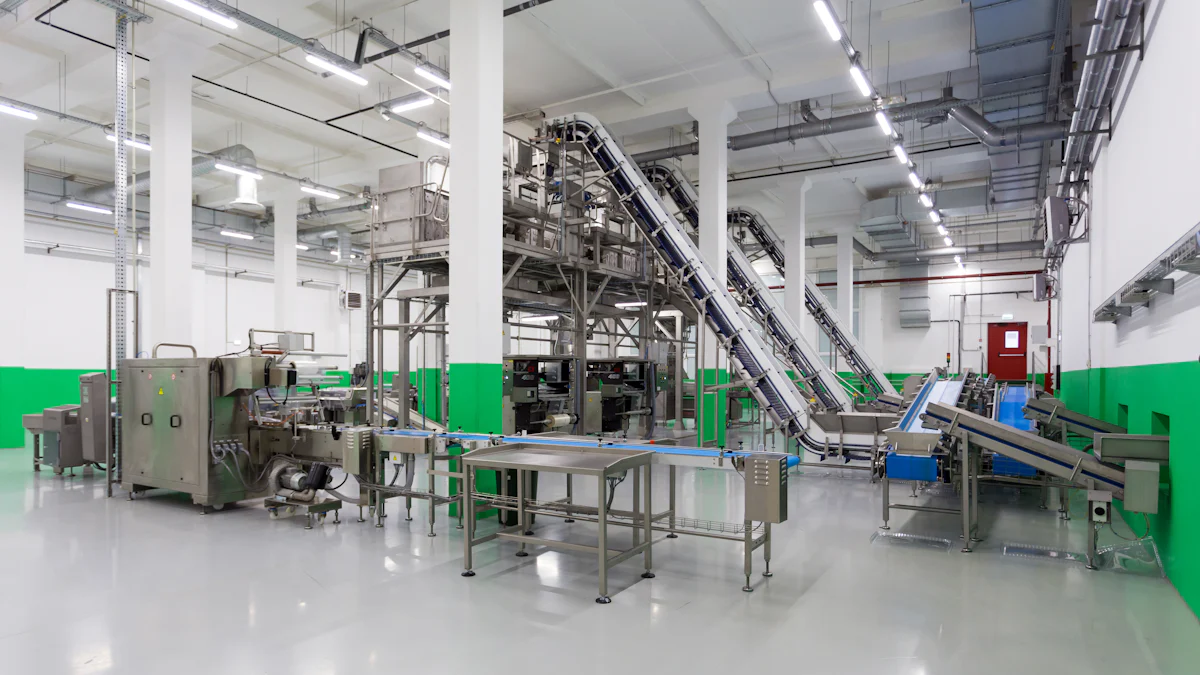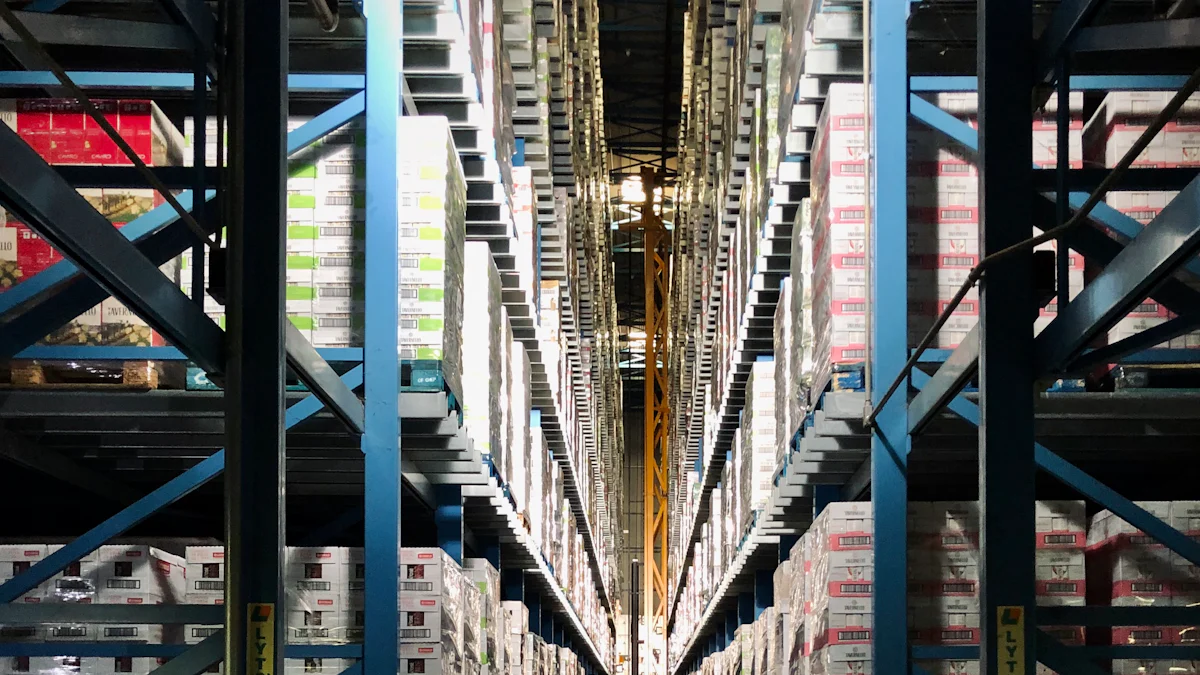the Latest Manufacturing Trends in 2024

Staying updated with manufacturing trends is crucial for maintaining competitiveness. The industry experiences rapid technological advancements, including the use of smart sensors, automation, and artificial intelligence. These innovations optimize resource usage and reduce environmental impact. In 2024, the manufacturing sector faces a pivotal year due to significant shifts in global supply chains and sustainability practices. Up to 60% of companies consider relocating production activities back to Europe or North America. Decisions made during product development can reduce over 80% of all product-related environmental impacts. This Comprehensive Guide explores these transformative changes.
Comprehensive Guide to Technological Advancements
Comprehensive Guide to Automation and Robotics
Increased Use of AI and Machine Learning
Manufacturing industries increasingly adopt AI and Machine Learning to enhance operational efficiency. AI algorithms analyze vast amounts of data to optimize production processes. Machine learning models predict maintenance needs, reducing downtime and improving productivity. The integration of AI contributes significantly to sustainability. AI-driven systems help identify areas for energy conservation and waste reduction. According to a study, AI could contribute $30 trillion to the global economy by 2030.
Collaborative Robots (Cobots)
Collaborative Robots (Cobots) work alongside human operators, enhancing productivity and safety. Cobots handle repetitive tasks, allowing human workers to focus on more complex activities. The use of cobots reduces the risk of workplace injuries. Cobots are flexible and easy to program, making them suitable for various manufacturing applications. The adoption of cobots leads to significant cost savings and efficiency improvements.
Additive Manufacturing (3D Printing)
Innovations in Materials
Additive Manufacturing (3D Printing) has revolutionized the manufacturing industry. Innovations in materials have expanded the possibilities of 3D printing. Advanced materials like carbon fiber composites and bio-based polymers offer enhanced strength and sustainability. These materials enable the production of lightweight and durable components. The use of innovative materials in 3D printing supports eco-friendly manufacturing practices.
Applications in Customization and Prototyping
3D Printing plays a crucial role in customization and prototyping. Manufacturers use 3D printing to create custom products tailored to specific customer needs. This technology allows rapid prototyping, reducing the time and cost associated with traditional manufacturing methods. 3D printing enables the production of complex geometries that are difficult to achieve with conventional techniques. The flexibility of 3D printing enhances product innovation and market responsiveness.
Internet of Things (IoT)
Smart Factories
The Internet of Things (IoT) transforms traditional factories into Smart Factories. IoT devices collect real-time data from various manufacturing processes. This data provides valuable insights for optimizing production and reducing inefficiencies. Smart factories utilize IoT to monitor equipment performance and predict maintenance needs. The implementation of IoT in manufacturing enhances operational efficiency and reduces costs.
Predictive Maintenance
Predictive Maintenance leverages IoT and AI technologies to anticipate equipment failures. Sensors installed on machinery collect data on performance and condition. AI algorithms analyze this data to predict when maintenance is required. Predictive maintenance minimizes unplanned downtime and extends the lifespan of equipment. This approach reduces maintenance costs and improves overall productivity.
Sustainable Manufacturing

Green Manufacturing Practices
Energy Efficiency
Manufacturers prioritize energy efficiency to reduce environmental impact. Companies invest in energy-efficient machinery and production processes. These investments lower energy consumption and operational costs. Renewable energy sources, such as solar and wind power, play a significant role. The use of renewable energy reduces reliance on fossil fuels. Energy-efficient practices contribute to sustainability goals and regulatory compliance.
Waste Reduction
Waste reduction remains a critical focus for sustainable manufacturing. Companies implement closed-loop manufacturing systems to minimize waste. These systems recycle materials back into the production process. Efficient waste management reduces landfill use and environmental pollution. Manufacturers also adopt lean manufacturing principles. Lean practices streamline operations and eliminate unnecessary waste. Effective waste reduction enhances brand reputation and customer trust.
Circular Economy
Recycling and Reuse
The circular economy emphasizes recycling and reuse of materials. Manufacturers design products with recyclability in mind. This approach extends the lifecycle of materials and reduces waste. Companies establish take-back programs for used products. These programs facilitate material recovery and recycling. The European Commission's Green Claims Directive pressures manufacturers to demonstrate genuine sustainability commitments. Transparent recycling practices build consumer confidence and meet regulatory standards.
Product Lifecycle Management
Product lifecycle management (PLM) integrates sustainability into every stage of production. PLM tools track the environmental impact of products from design to disposal. This tracking helps identify areas for improvement and sustainability. Manufacturers use eco-friendly materials to reduce the environmental footprint. Green technologies support sustainable product development and manufacturing. PLM ensures that sustainability remains a core focus throughout the product's life.
Workforce Transformation
Upskilling and Reskilling
Training Programs
Manufacturing companies must invest in comprehensive training programs. These programs aim to equip employees with new skills relevant to modern manufacturing processes. Training initiatives focus on advanced technologies, including automation and AI. Companies also emphasize soft skills, such as problem-solving and critical thinking. Effective training programs enhance employee productivity and job satisfaction.
Integration of New Technologies
The integration of new technologies requires a skilled workforce. Employees must understand how to operate and maintain advanced machinery. Training on new technologies includes hands-on workshops and simulations. Companies often collaborate with educational institutions to provide specialized courses. This approach ensures that the workforce remains competent and adaptable.
Remote Work and Digital Collaboration
Virtual Reality (VR) and Augmented Reality (AR)
Virtual Reality (VR) and Augmented Reality (AR) revolutionize remote work in manufacturing. VR allows employees to participate in virtual meetings and training sessions. AR provides real-time information overlays, assisting workers during complex tasks. These technologies improve communication and collaboration among remote teams. VR and AR also reduce travel costs and enhance operational efficiency.
Cloud-Based Solutions
Cloud-based solutions facilitate digital collaboration in the manufacturing sector. These platforms enable real-time data sharing and access from any location. Cloud-based tools support project management, document storage, and communication. Companies benefit from increased flexibility and scalability. Cloud solutions also enhance data security and disaster recovery capabilities.
Supply Chain Innovations

Digital Supply Chains
Blockchain Technology
Blockchain technology revolutionizes supply chain management. This technology ensures transparency and traceability in transactions. Each transaction gets recorded in a decentralized ledger. This method reduces fraud and errors. Manufacturers benefit from improved trust and accountability. Blockchain also enhances regulatory compliance.
Real-Time Data Analytics
Real-time data analytics optimizes supply chain operations. Sensors and IoT devices collect data continuously. Advanced algorithms analyze this data instantly. This process identifies inefficiencies and bottlenecks. Companies can make informed decisions quickly. Real-time analytics improves inventory management. This approach reduces costs and enhances customer satisfaction.
Resilient and Agile Supply Chains
Diversification of Suppliers
Diversification of suppliers strengthens supply chain resilience. Companies source materials from multiple suppliers. This strategy reduces dependency on a single source. It mitigates risks associated with supply disruptions. Diversification also fosters competitive pricing. Manufacturers gain flexibility in production planning.
Risk Management Strategies
Effective risk management strategies ensure supply chain agility. Companies identify potential risks proactively. These risks include natural disasters, geopolitical tensions, and market fluctuations. Risk assessment tools evaluate the impact of these factors. Companies develop contingency plans to address disruptions. This approach minimizes downtime and maintains operational continuity.
Lenovo's supply chain exemplifies these principles. The company focuses on regional manufacturing. Europe serves Europe, the Americas serve the Americas, and Asia serves Asia. This strategy shortens supply chains and supports sustainability goals. Circular economy practices further enhance resilience. Reduced dependence on outsourced materials lowers risks.
Staying updated with manufacturing trends remains crucial for maintaining competitiveness. Technological advancements, such as AI and automation, optimize resource usage and reduce environmental impact. The reshoring of production activities back to Europe or North America strengthens supply chains. Eco-friendly manufacturing processes, including renewable energy and waste reduction, enhance sustainability. Lenovo's regional manufacturing strategy exemplifies operational efficiency and sustainability goals. Adopting these trends ensures sustained growth and competitiveness in the evolving manufacturing landscape.
See Also
Maximizing Manufacturing Success in 2024 Through Supply Chain Strategies
Automation Ahead: Benefits of High-Tech Manufacturing Warehouses
Enhancing Supply Chain Efficiency: 5 Key Trends Ahead
Navigating the Path to Manufacturing Success with Essential Strategies
Efficient Solutions for Addressing High-Tech Manufacturing Supply Chain Challenges
